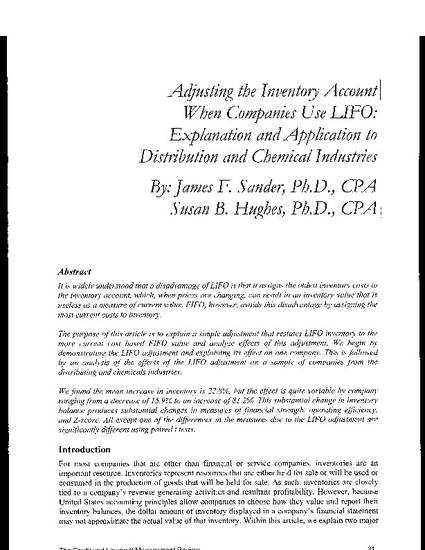
It is widely understood that a disadvantage of LIFO is that it assigns the oldest inventory costs to the inventory account, which, when prices are changing, can result in an inventory value that is useless as a measure of current value. FIFO, however, avoids this disadvantage by assigning the most current costs to inventory.
The purpose of this article is to explain a simple adjustment that restates LIFO inventory to the more current cost based FIFO value and analyze effects of this adjustment. We begin by demonstrating the LIFO adjustment and explaining its effect on one company. This is followed by an analysis of the effects of the LIFO adjustment on a sample of companies from the distributing and chemicals industries.
We found the mean increase in inventory is 22.8%, but the effect is quite variable by company ranging from a decrease of 15.9% to an increase of 81.2%. This substantial change in inventory balance produces substantial changes in measures of financial strength, operating efficiency, and Z-score. All except one of the differences in the measures due to the LIFO adjustment are significantly different using paired t tests.
This article was archived with permission from Credit Research Foundation, all rights reserved. Document also available from Credit and Financial Management Review.
Available at: http://works.bepress.com/james_sander/14/
